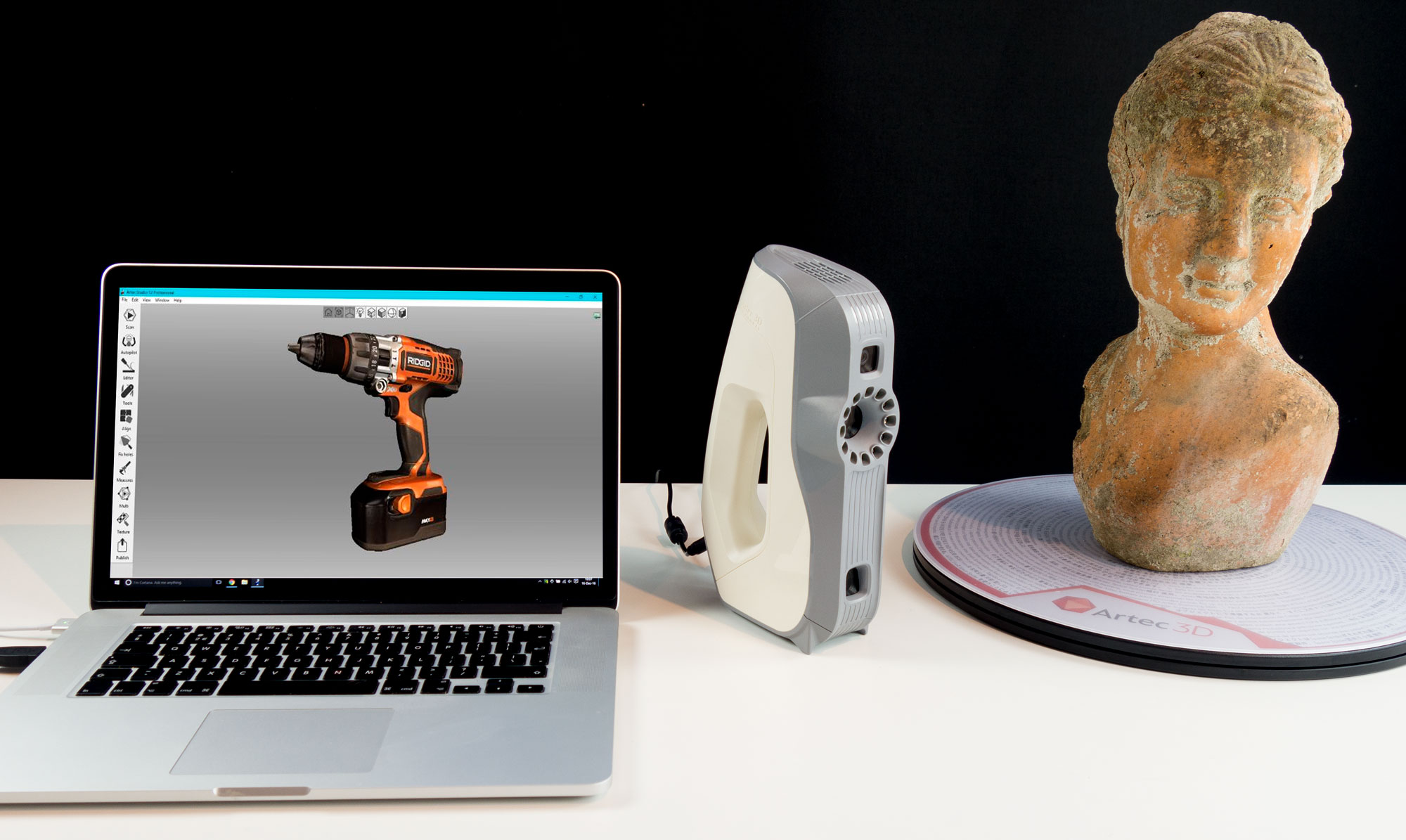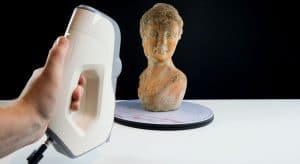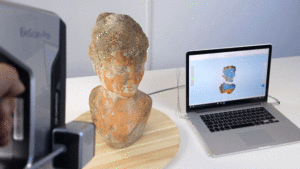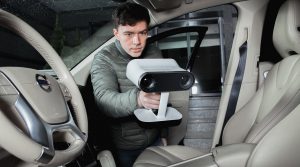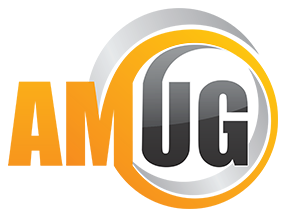When I reviewed the Artec Eva recently, my conclusion was pretty simple: that device is currently the best general-purpose handheld 3D scanner money can buy — if you have enough of it. That was partially because the hardware, but also largely because of the excellent Artec Studio software. In my opninion 3D scanning relies 50% on hardware and 50% on software and the Version 11 I tested back then just got the Autopilot feature which was a killer one.
This week, Artec released version 12 and while I currently don’t have a compatible scanner laying around to test it with — reviews or the Space Spider (and hopefully Leo) can be expected later this year — I want to take you through the updates and compare them to my review of version 11. I’ll do this in the order or the features that interest me most first.
Automatic sensitivity for Eva
This feature is worth the upgrade alone, especially when you’re scanning people on a regular basis. When I tried to scan my business partner Patrick with Studio 11, I discovered that the Eva had problems with capturing his dark hair. Increasing the sensitivity solved this, but resulted in more noise in the parts that captured just fine on the default setting. So I had to combine two scans at different settings to make an optimal model. Studio 12 can automatically increase sensitivity when it detects hard-to-scan surfaces (dark, shiny, translucent, etc) to improve both tracking and results. While doing so, it also uses new algorithms to reduce noise for better results. That will easily save the time that will pay for the update after a few professional scanning projects!
Better raw scan editing
Before running Autopilot, Studio 11 gave the option to edit the raw scan data and delete unwanted parts to make processing faster and more efficient. One of the most common tasks here is base removal, since you usually want just the object on top of a surface. On top of the the existing plain-cutting tool, there’s now a Smart Base Removal feature that can also remove non-flat surfaces. The eraser tool has also been improved. It can now be used continuously for a faster and smoother workflow.
Way faster global registration
This is simply the most time-consuming part of processing raw scan data and it is now up to 10 times faster — ten times! Here are some example projects with processing speed comparisons:

With that improvement, you no longer have to choose the Real Time Fusion (RTF) result over a more detailed post-processed one when deadlines are tight.
Smarter memory management & data compression
When I tried to process a large scan project (full body) I made with a 16GB laptop on a 8GB PC with Studio 11, I discovered that this was simply impossible. There’s simply so much data that it can quickly fill all RAM you have and it would only detect that it has ran out mid-process and then stop processing entirely. I still advice at least 16GB for anything 3D scanning related but in Studio 12 Artec added a feature that will automatically manage RAM usage, allowing bigger projects with the same amount of memory. On the storage side, Studio 12 can now compress project files to reduce the size 2-3 times.
More tablet-friendly
Both the RAM and storage improvements will be especially appreciated for people that want to scan using a tablet computer which are usually more limited when it comes to specs but a lot more portable to walk around with. On top of that, scanning can now be done in a full screen mode that hides the panels — great for tablets with smaller screens and less distracting in general.
Better default color settings
In my review, I complain about the fact that the color of scans processed with Autopilot turned out very dark. That forced my to run the texturing algorithms again, partially defeating the purpose of the automatic mode. This has now been fixed and textures will be better with the default settings.
Many workflow improvements
Of course there are many other improvements and it’s good to know that they will all make the workflow more streamlined. Small things like renaming some features and hiding ones that are rarely used by default are great. Also, the interface is now optimized for recent graphics cards for smoother 3D navigation at full quality. This can now also be done with a 3D mouse if you have one.
Altogether this looks like a worthy upgrade. I’ll do an actual review and comparison when I’m going to review the Space Spider. Follow me on social your favorite social network if you would like to be the first to know when that is.
